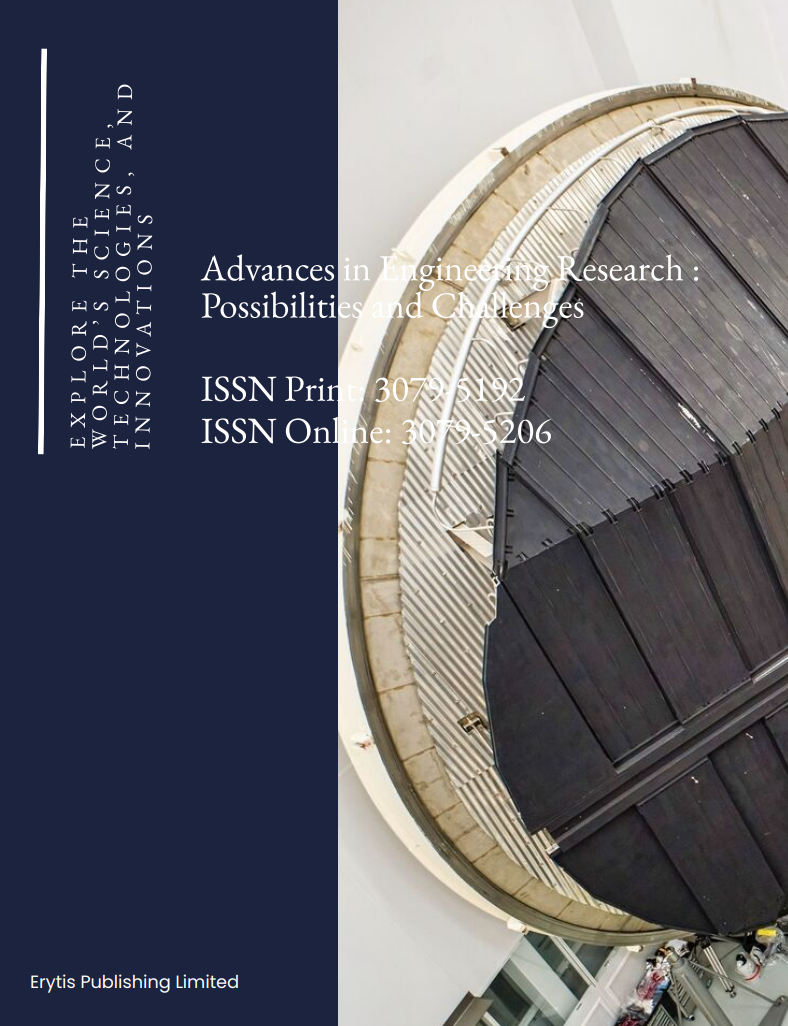The application of well logging technology in stratigraphic deposition
DOI:
https://doi.org/10.63313/AERpc.2001Keywords:
Well logging technology, Interpretation of well logging data, Characteristics of well logging curves, Sedimentary faciesAbstract
Well logging data can be used to determine lithology and for stratigraphic division and correlation. Well logging technology primarily utilizes the geological and physical properties of rock formations, such as electrical conductivity, electrochemical properties, acoustic properties, and radioactivity, to measure their parameters. Spontaneous potential logging utilizes changes in the spontaneous potential curve to classify lithology; natural gamma logging employs gamma curves for lithology classification and stratigraphic correlation to determine shale content; density logging can accurately calculate porosity and distinguish the nature of various fluids in the reservoir; and acoustic logging can be used to delineate the boundary between sandstone and mudstone and to identify gas zones. Essentially, various well logging methods can only indirectly and conditionally reflect certain aspects of the geological characteristics of rock formations. To accurately and comprehensively understand the subsurface geological features and to discover and evaluate hydrocarbon reservoirs, it is necessary to combine multiple well logging methods and pay attention to drilling, mud logging, and other data. Utilizing well logging curve data not only allows for accurate stratigraphic lithology classification but also more vividly represents the depositional environment. By analyzing the shape of the well logging curves and various logging values, it is possible to determine the geometric morphology, lithology, lithofacies, sedimentary structures, ancient water flow and transport directions, and geochemical characteristics of the depositional facies.
References
[1] Yin, S.P., Wang, G.W., A summary of sedimentology from well logs [J]. Advances in Earth Science, 1999, (05): 440-445.
[2] Li, Z.S., Zheng, Z., Ma, H.L., et al., Research and Application of Combination Logging Tech-nology of Forty Arm Diameter Imaging and Electromagnetic Flaw Detection [J]. China Pe-troleum and Chemical Standard and Quality, 2020, 40 (02): 250-252.
[3] Yang, F., Experimental study on the shallow Transient Electromagnetic of Prospecting Technology [D]. Anhui University of Science and Technology, 2015.
[4] Meng, R., Application of well logging in evaluating wellbore stability of shale formation [D]. Southwest Petroleum University, 2017.
[5] Nazarov, D.V., Lokshin, D.A., Volkov, V.G., et al., Defining the cavernosity level for the com-plex Vendian-Cambrian carbonates using the standard well logging methods[J]. Neftyanoe khozyaystvo - Oil Industry,2019,(11): 18-22.
[6] Chen, G.H., Li, J.Z., Practice and Reflection on the Curriculum Construction of "Logging Data Processing and Comprehensive Interpretation" [J]. Course Education Research, 2018, (48): 241-242
[7] Yong, S.H. and Zhang, C.M., Logging Data Processing and Comprehensive Interpretation [M]. Qingdao: China University of Petroleum Press, 1996.
[8] Wang, H., Zhang, Y.S., Research Status and Prospect of Artificial Intelligence in Logging Data Processing and Interpretation [J]. Well Logging Technology, 2021, 45 (04): 345-356. https://doi.org/ 10.16489/j.issn.1004-1338.2021.04.01.
[9] He, Q.X., Sedimentary rocks and sedimentary deposits [M]. Beijing: Geological Publishing House, 1978:331-376.
[10] Feng, Z.Z., Wang, Y.H., Liu, H.J., et al., Chinese sedimentology [M] Beijing: Petroleum Indus-try Press, 1994:343-538.
[11] Yu, M.F., Cheng, R.H., Na, X.H., Logging characteristics of main sedimentary microfacies in continental basins [J]. World Geology, 2005, (02): 182-187.
[12] Busch, J.M., Fortney, W.G., Berry, L.N., Determination of Lithology From Well Logs by Sta-tistical Analysis[J]. SPE Formation Evaluation,1987,2(04).
[13] Pan, B.Z., Xue, L.F., Fractional Dimension and Its Application in Logging Geological Inter-pretation [J]. Well Logging Technology, 1992, (03):214-221. https://doi.org/10.16489/j.issn. 1004-1338.1992.03.009.
[14] Doveton, J.H., Prensky, S.E., Review paper: Geological application of wire line logs: a syn-opsis of developments and trends[J].The Log Analyst,1992,33(3):286~303.
[15] Bucheb, J.A., Evans. H.B., Some application of methods used inelectrofacies identification [J]. The Log Analyst,1994,35(1):14~26.
[16] Yong, S.H., Wen, Z., Quantitative identification of sedimentary microfacies using Bayes discriminant method [J]. Well Logging Technology, 1995, (01):22-27. https://doi.org/10.16489/j.issn. 1004-1338.1995.01.005.
[17] Elphick, R.Y., A deterministic method for calculating facies from wire line logs[J].The Log Analyst, 1996,37 (2):14~25.
[18] Chen, G.H., Wang, Z.W., Wang, X.W., Research on sedimentary microfacies and logging fa-cies of river facies [J]. Well Logging Technology, 1996, (05):25-30. https://doi.org/10.16489/j.issn.1004- 1338.1996.05.005.
Downloads
Published
Issue
Section
License
Copyright (c) 2025 by author(s) and Erytis Publishing Limited.

This work is licensed under a Creative Commons Attribution 4.0 International License.















